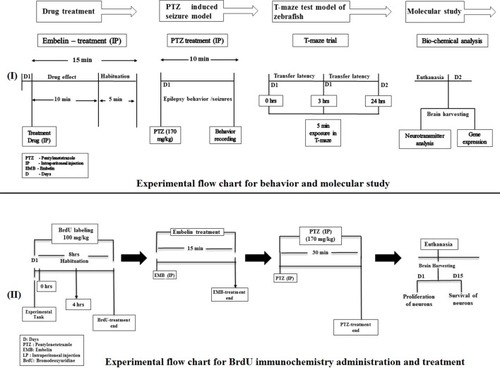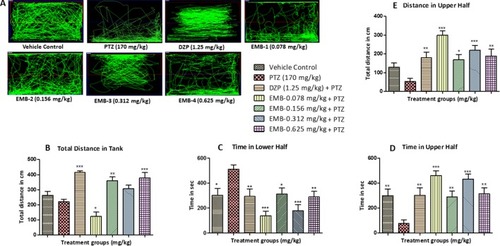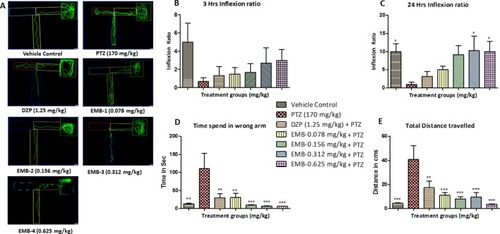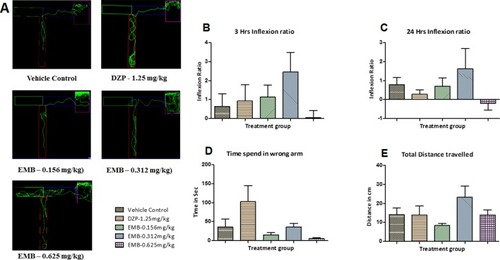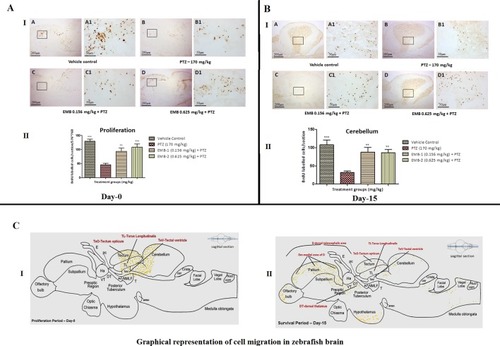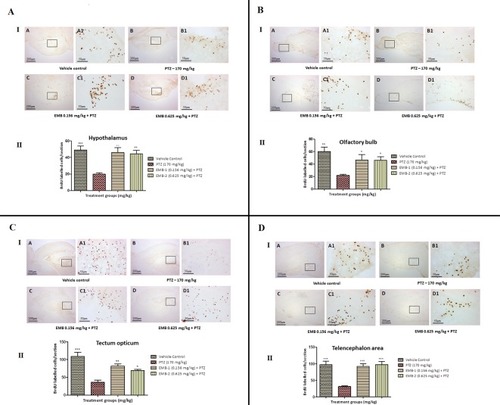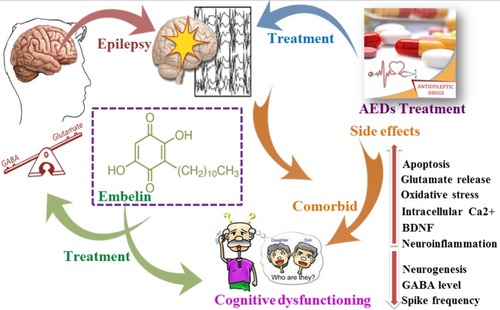- Title
-
Embelin Protects Against Acute Pentylenetetrazole-Induced Seizures and Positively Modulates Cognitive Function in Adult Zebrafish
- Authors
- Kundap, U.P., Choo, B.K.M., Kumari, Y., Ahmed, N., Othman, I.B., Shaikh, M.F.
- Source
- Full text @ Front Pharmacol
|
Experimental setup and design procedure. The flowchart represents the scheme for drug treatment, PTZ administration, and behavior recording for epilepsy and T-maze used in the study. |
|
Seizure score and onset latency for epileptic seizures: |
|
Locomotor pattern and behavior analysis of embelin treatment against pentylenetetrazole (PTZ) induced seizures: |
|
T-maze tracking pattern and behavior analysis of embelin treatment against pentylenetetrazole (PTZ) induced seizures and cognitive dysfunction. |
|
T-maze tracking pattern and behavior analysis of embelin treatment in adult healthy zebrafish: |
|
|
|
|
|
|
|
|
|
BrdU immunohistochemistry analysis of the effects of embelin in improving neurogenesis and migration of cells generated during adulthood from the molecular layer to the granular layer within the molecular zone of the hypothalamus, the internal cellular layer of the olfactory bulb of the periventricular gray zone of TeO, and the medial zone of the dorsal telencephalic area against pentylenetetrazole-induced epilepsy the zebrafish brain. (I) BrdU-positive staining revealed labeling and number of migration of cells at day 15 of maturation and differentiation stage at the molecular zone of each section of zebrafish brain with BrdU labeling. Photomicrographs of the sagittal section of treatment groups were |
|
Impact of epilepsy and antiepileptic drugs on cognitive dysfunction. |

